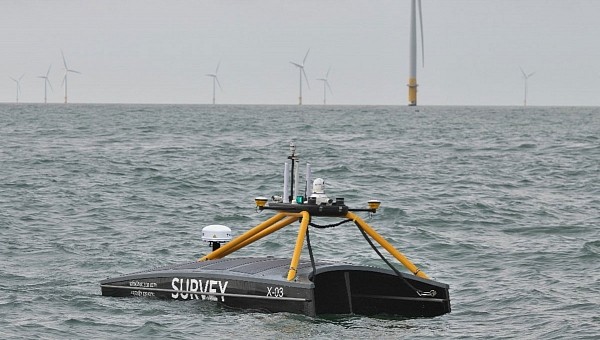With the world slowly switching to EVs, we must implement the appropriate infrastructure to generate the large amount of energy needed. With sustainability in mind, one of the solutions is offshore wind farming. Vattenfall, a European energy company, announced it successfully conducted large-scale seabed surveys with uncrewed surface vessels.
When operating an offshore wind farm, it's essential to survey the seabed periodically. Specifically, you need to monitor changes in scour development and cable burial depth around turbine foundations and substation jacket legs. The information is also critical for maintenance and repair activities involving jack-up vessels – a stable seabed is needed to ensure the wind farm is located at a safe elevation out of the water.
Vattenfall has been operating for over 100 years, electrifying industries and supplying energy to people's homes. It recognizes the danger of climate change and focuses on alternative powering and heating methods. Its goal is to reach net zero emissions by 2040 for its operations, supplies, and customers.
Typically, crewed vessels carry out seabed surveys. However, they emit significant amounts of carbon due to fuel consumption. When looking for a contractor for seabed surveys, Vattenfall received a proposal to try out uncrewed vessels.
The technology uses a lot less fuel than conventional means. The vessel is operated from an onshore center instead of having people onboard. So, not only does it use less fuel and reduces carbon emissions, but it's also a safer solution for the personnel. Given how quickly technology is evolving, it wouldn't surprise me if uncrewed vessels become fully autonomous in the near future.
After Vattenfall observed the deployment of the technology in small-scale trails, the company wanted to test its efficiency in large-scale operations. So, in the late summer and early autumn of this year, they successfully conducted seabed surveys at their offshore wind farms in Denmark, Sweden, and the UK.
The uncrewed survey vessels reduce consumption by up to 90% in some cases. This is partly due to its significantly smaller size than traditional vessels – it has a total length of 4.5 m (15 feet). However, the main reason is that they're more modern.
Ocean data acquisition company XOCEAN offered the service. The brand has provided turnkey data collection services to surveyors, companies, and agencies since 2017. It began using uncrewed survey services in 2019.
Vattenfall is exploring other ways to use the technology and further reduce carbon emissions. The Senior Lead Geophysicist at Vattenfall, Rasmus Juncher, said the company wishes to pursue other opportunities, such as using the vessels to inspect Vettenfall's assets both under and above the water. He added, "The journey of autonomous vehicles in general have just begun and I believe that the possibilities are endless."
Vattenfall has been operating for over 100 years, electrifying industries and supplying energy to people's homes. It recognizes the danger of climate change and focuses on alternative powering and heating methods. Its goal is to reach net zero emissions by 2040 for its operations, supplies, and customers.
Typically, crewed vessels carry out seabed surveys. However, they emit significant amounts of carbon due to fuel consumption. When looking for a contractor for seabed surveys, Vattenfall received a proposal to try out uncrewed vessels.
The technology uses a lot less fuel than conventional means. The vessel is operated from an onshore center instead of having people onboard. So, not only does it use less fuel and reduces carbon emissions, but it's also a safer solution for the personnel. Given how quickly technology is evolving, it wouldn't surprise me if uncrewed vessels become fully autonomous in the near future.
After Vattenfall observed the deployment of the technology in small-scale trails, the company wanted to test its efficiency in large-scale operations. So, in the late summer and early autumn of this year, they successfully conducted seabed surveys at their offshore wind farms in Denmark, Sweden, and the UK.
The uncrewed survey vessels reduce consumption by up to 90% in some cases. This is partly due to its significantly smaller size than traditional vessels – it has a total length of 4.5 m (15 feet). However, the main reason is that they're more modern.
Ocean data acquisition company XOCEAN offered the service. The brand has provided turnkey data collection services to surveyors, companies, and agencies since 2017. It began using uncrewed survey services in 2019.
Vattenfall is exploring other ways to use the technology and further reduce carbon emissions. The Senior Lead Geophysicist at Vattenfall, Rasmus Juncher, said the company wishes to pursue other opportunities, such as using the vessels to inspect Vettenfall's assets both under and above the water. He added, "The journey of autonomous vehicles in general have just begun and I believe that the possibilities are endless."






